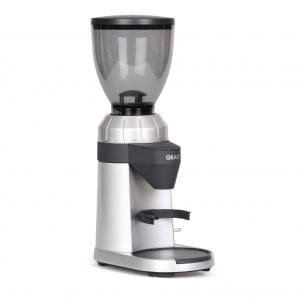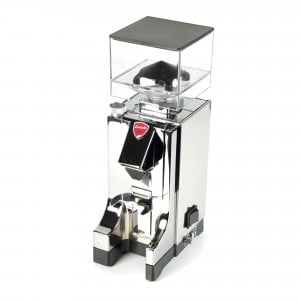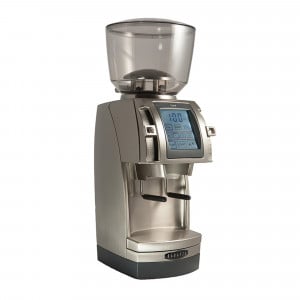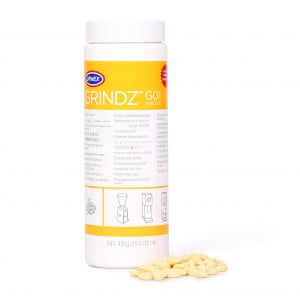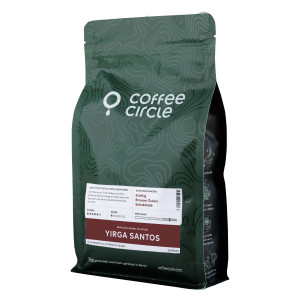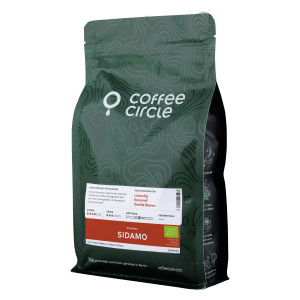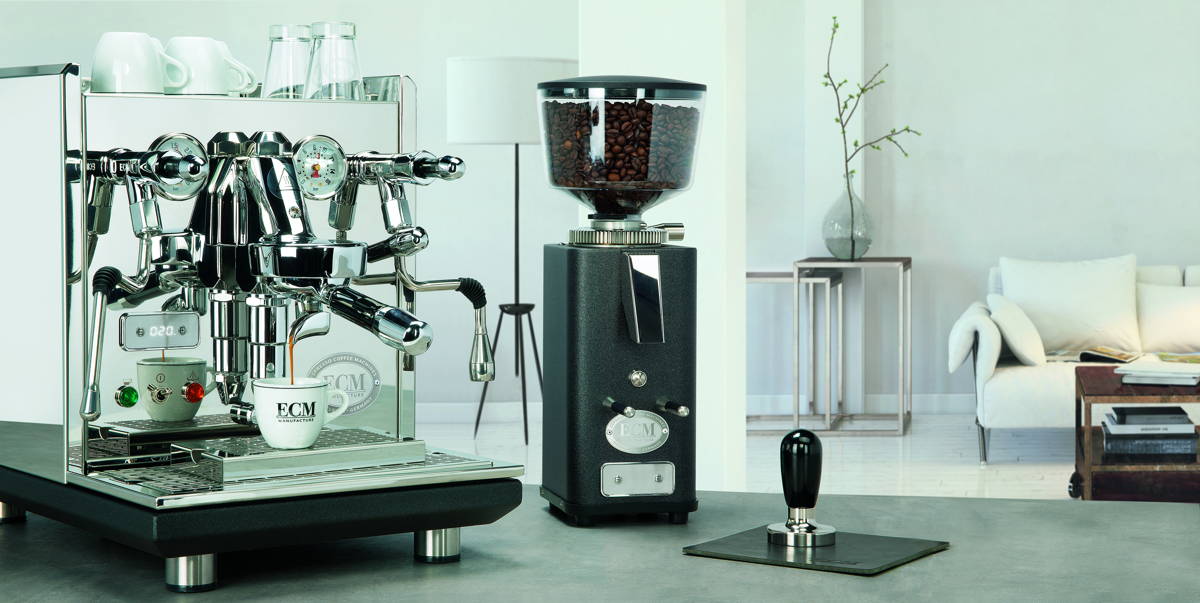
Espresso grinders in test 2023
The most important aspect on the long road to the perfect espresso is the espresso grinder. Delicious espresso certainly starts with a good bean and is completed by a good espresso machine. However, the role of the grinder is usually underestimated. As always, there are superheroes and failures here, too. We have tested 3 espresso grinders and tell you what really matters!
NOTE: An espresso grinder is not the same as a coffee grinder. Espresso grinders have a much finer range of grinds. Click here for our coffee grinder test.
The video of the test.
Watch our favorites in action and learn why a good espresso grinder is more important than an expensive espresso machine for a good espresso.
Our favorite
After hours of grinding, an unbelievable number of espressos drawn, and an extensive review of the grind, one thing is certain: the Baratza Forté AP has won the race. The grinder works with durable and heat-resistant 54 mm ceramic grinding discs and delivers a very good grinding result. In addition, the grinder grinds very consistently when using the timer function, which guarantees a consistent taste experience during everyday use. The grinder’s design also supports this, as hardly any coffee grounds get stuck in the Forté and influence the taste of your next espresso. You can easily set and replicate 260 grinds via a micro and a macro setting. So nothing stands in the way of frequent bean changes. The elegant stainless steel look and an intuitive touch display complete the picture of a high-end grinder. Our only criticism is the weighing function, which unfortunately does not work with the sieve carrier, but only with the powder container. However, this is merely a feature that is not quite well-rounded and not a real drawback.
We were so convinced by the Forté that we have included it in our store.
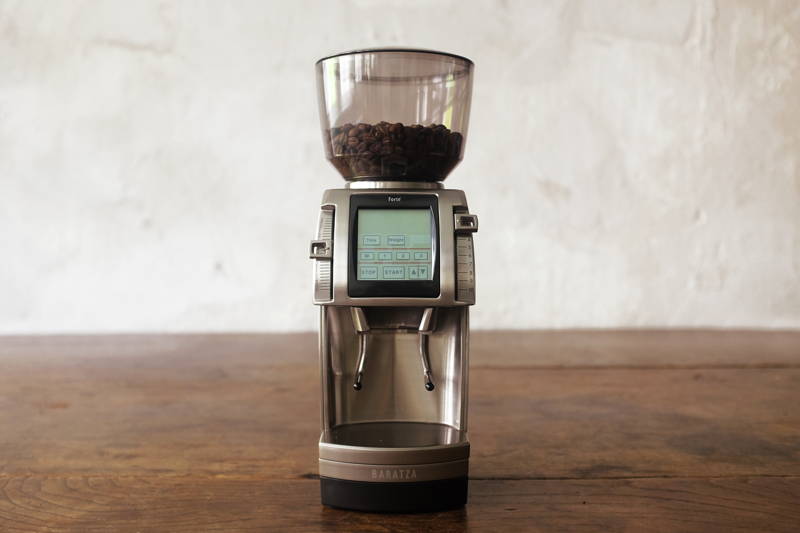
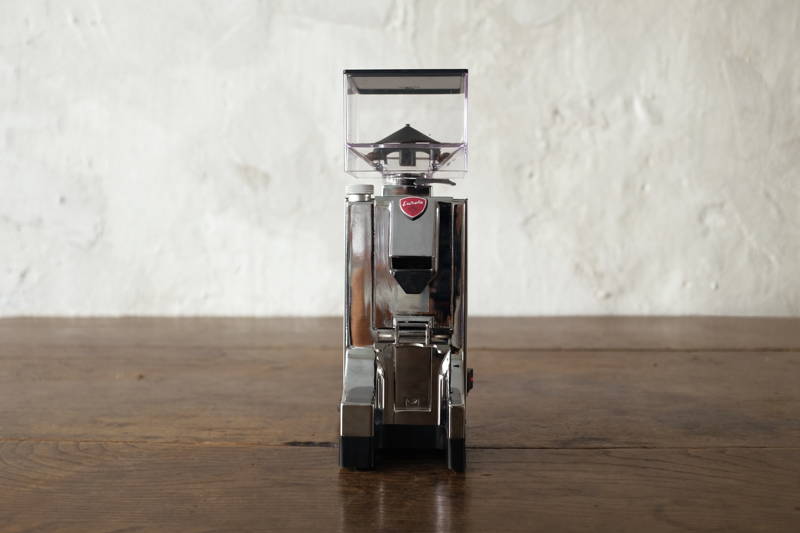
For about half the price, the Eureka Mignon offers an affordable entry into the top class. Its grinding result is among the absolute best in the test, which surprised us very much. 50 mm stainless steel discs enable a very homogeneous grind. Only the consistency of grind has to suffer due to lump formation at fine grinds. The infinitely variable adjustment of the grind takes time, but also offers limitless possibilities when fine-tuning your espresso. The good price-performance ratio is rounded off by a robust finish that makes the Mignon a long-lasting friend and companion.
Our price-performance winner is the Graef CM 800, which is a good introduction to the world of espresso and offers exactly what you pay for. The steel cone grinder has 40 grinding levels, but only 2 of them are really suitable for espresso. So you have to do without any leeway for fine-tuning with the Graef. However, you can easily adjust the grind and use the grinder as an all-rounder for filter coffee. Unlike many other grinders in the same price range, the Graef is very sturdily built and can become a permanent fixture in your home coffee bar. However, an upgrade will become necessary sooner or later.

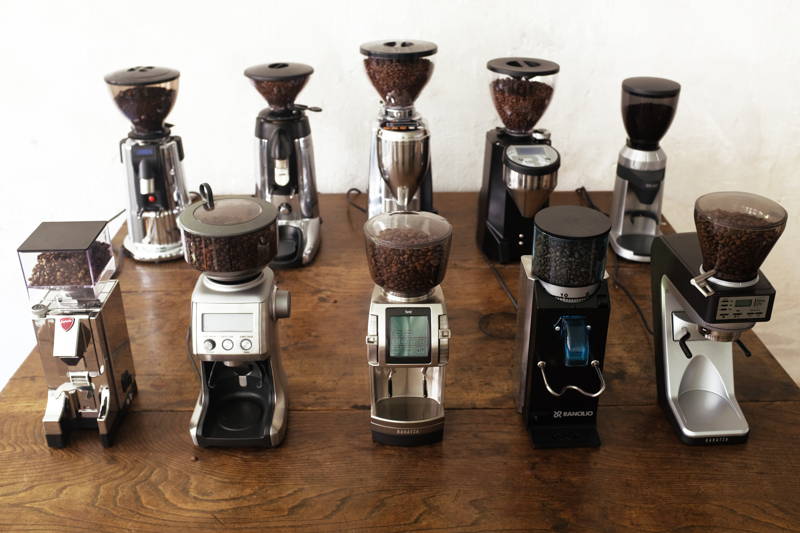

Why is a good espresso grinder so important?
If you ask a good barista about the art of espresso, he will talk about the quality of the grind long before he raves about the full-bodied tiger stripes in the crema and the optimal tamper pressure. Homogeneity is the key word here. Only uniformly ground coffee ensures that the espresso is neither over-extracted and thus tastes too bitter, nor under-extracted and runs through the portafilter in seconds. According to the Istituto Nazionale Espresso Italiano, the brewing time for an espresso should not exceed 25 to 30 seconds. During this process, the water is forced into the sieve carrier at 9 bars and, on its way down, takes with it all the aromatic substances that the coffee particles release before it ends up as a strong espresso in the small demitasse cup. Small particles release more aroma than large ones in this short time. This disturbs the balance of the espresso and it turns out sometimes sour, sometimes bitter. Homogeneous grinds therefore allow the particles to release the same amount of aroma thanks to their equal size and thus contribute uniformly to the flavor.
But how much homogeneity is desired?
Nothing in this world is perfect. Even the best professional grinder cannot produce only coffee particles of one and the same size. And that’s just as well! Because the nuances that some larger and smaller particles bring give the espresso character and make each cup unmistakable. So perfect homogeneity is not the goal! Rather, the goal is for a grinder to grind many particles of the same size while leaving room for a few larger and smaller particles. On its own, a good grinder should avoid too much fine dust, as this immediately releases undesirable bitter substances when it comes into contact with the hot water and can negatively affect the balance of the espresso.
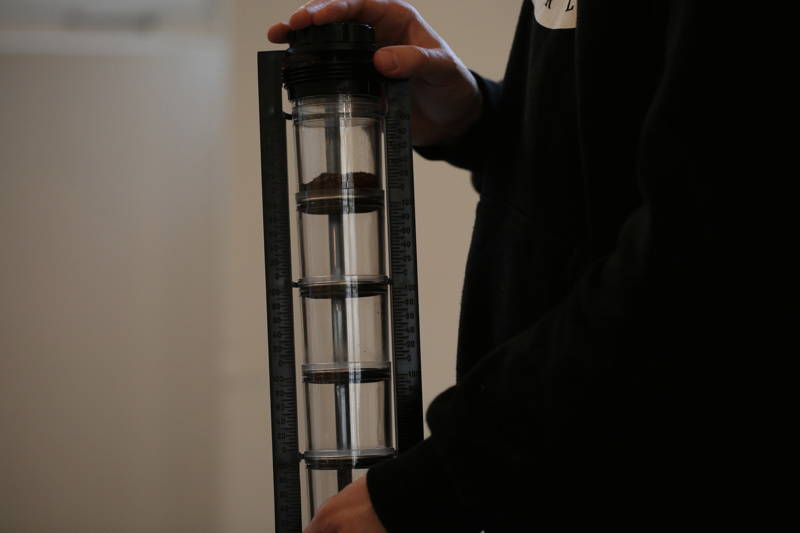
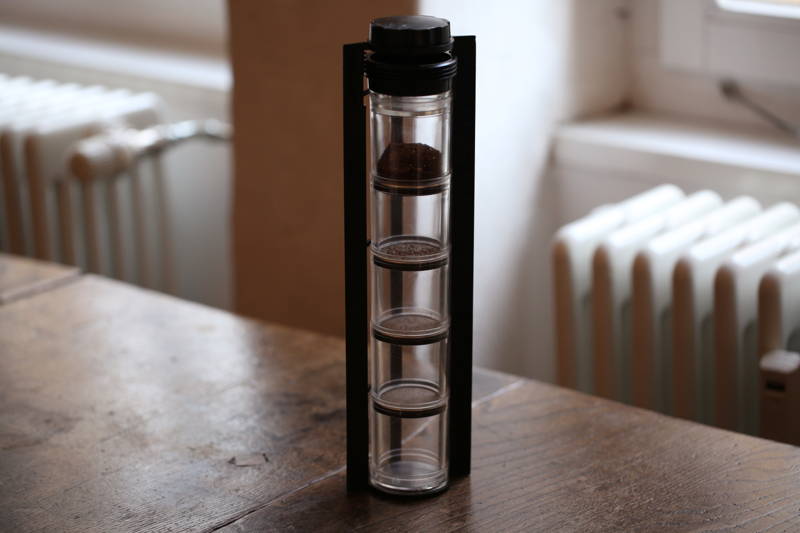
Since every espresso machine works with the grind that the grinder provides it, it is extremely important to invest in a good grinder. Even the best espresso machine in the world cannot make a good espresso from poorly ground coffee.
Tip: the Istituto Nazionale Espresso Italiano says: 15 g to 15.5 g of ground coffee for a double espresso.
We tested the homogeneity of the grind with the Keck Sand Shaker. The coffee particles can be separated from each other through different sized sieves, and we can measure how homogeneous the grinding result of the respective grinder is.
First, we adjusted the grind on each grinder so that the espresso went through in optimal time on our La Marzocco. Then we shook 10 grams of coffee in the Keck Sand Shaker until no more coffee particles fell to the bottom of the shaker (about 3-5 minutes).
When selecting the sieve sizes, it was important to us that hardly any coffee particles collected on the two outer sieves.
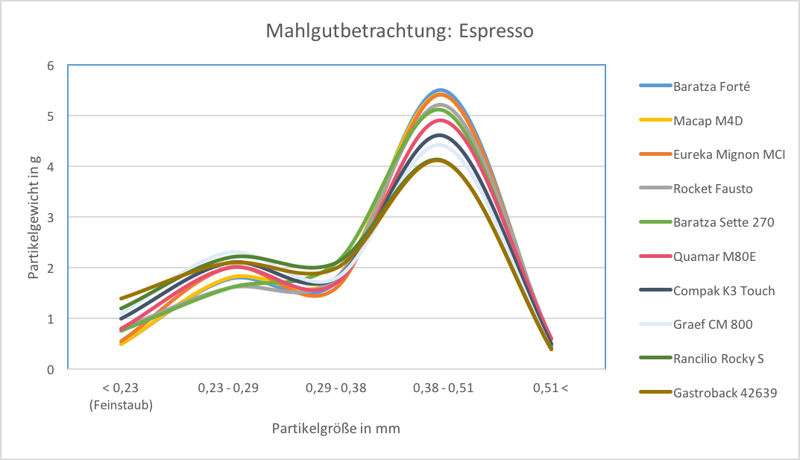
The graph shows how uniformly the test grinders grind. The X-axis shows the size of the coffee particles in mm, whereby all particles smaller than 0.23 mm are considered by us to be fine dust. The Y-axis illustrates the weight of the particles weighed by us in the respective size range.
Ideally, a large proportion of the coffee particles lie within a range. The higher the peak of the curve, the more homogeneous the grind. In addition, the deviation from this „ideal size“ should also be as small as possible, i.e., as large a proportion of the particles as possible should collect in the areas around the peak. In addition, the proportion of fine dust, i.e. the weight in the area smaller than 0.23 mm, should be as low as possible.
How to recognize a good espresso grinder?
First and foremost, of course, the quality of the ground material. As already explained above, the grinder should achieve as uniform a grinding result as possible with a low proportion of fine dust. And this should be achieved with the widest possible range of grinds. You can find a detailed review of our favorite grinders further down in this test report.
Which grinder you use to achieve this result is ultimately of secondary importance. Nevertheless, we would like to give you a few basics along the way.
Grinders with disc grinders are currently the most commonly used, especially for espresso grinders. The beans are ground between two concave grinding discs that lie on top of each other. One of the two discs is driven by a motor and the other disc is stationary. The distance between the two discs is slightly larger on the inside than on the outside. The bean passes from the inside between the discs, is broken up here, and then transported further to the outside by centrifugal force. As the grinding discs are closer together on the outside, the bean is ground finer and finer. To adjust the degree of grinding, the distance between the discs is changed.
In grinders with a cone grinder, the coffee beans are ground between the inner cone and the outer wall. In this case, the grinding surface is larger for the same diameter compared to the disc grinder. The distance between the cone and the wall becomes smaller and smaller towards the bottom, so that the beans are ground finer and finer. The degree of grinding can be changed via the distance between the cone and the wall. In contrast to a disc mill, the ground material is not carried to the side. Rather, it falls down and into a collecting container. The force of gravity thus supports the movement of the material to be ground. For this reason, the speed of a cone mill is lower than that of comparable disc mills.
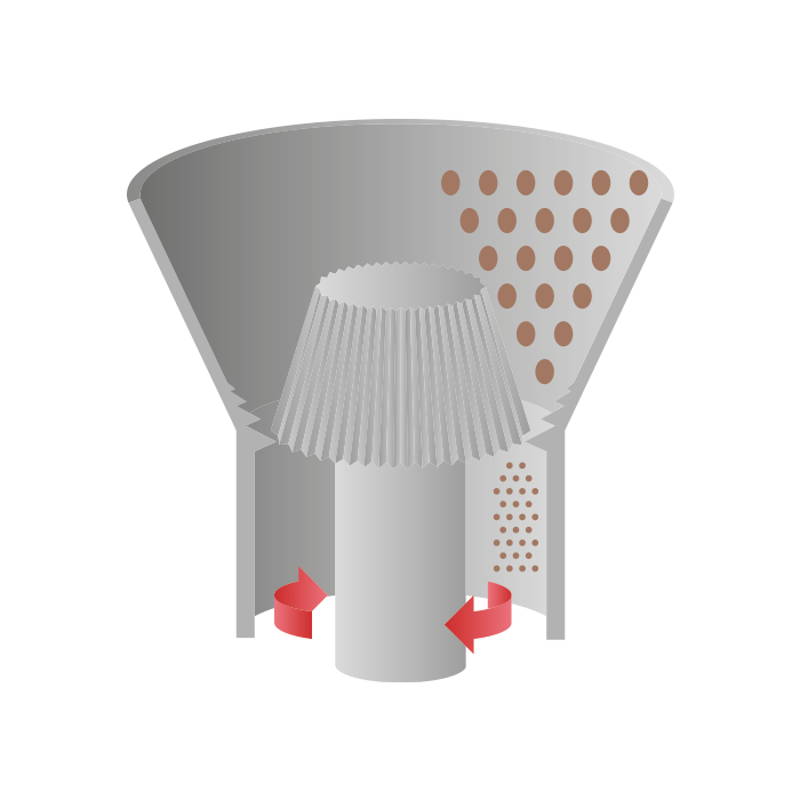

But which grinder is better? Opinions differ on this question.
The main focus of this comparison is usually the heat generated during the grinding process. If the beans are heated too much, some of the coffee oils burn and the coffee tastes bitter to burnt.
Due to their lower speed, cone grinders do not heat up as much and the coffee is ground in a way that is gentle on the aroma. To compensate for this disadvantage, disc grinders often have a larger diameter. This allows the heat to be better distributed during the grinding process.
The fact that the question of which type of grinder is better cannot be answered across the board is also made clear by the design of many inexpensive coffee grinders. These often use cone grinders with a small diameter and therefore have a lower torque, which they have to compensate for with a higher speed. In this way, they practically reverse the advantages of high-quality large-diameter cone grinders.
Sound like too much science? Just remember that grinders that are gentle on aromas should have the lowest possible speed. And disc grinders should have a larger diameter than cone grinders.
Another distinguishing feature of grinders is their material. Regardless of their type, there are ceramic and steel grinders. Ceramic grinders wear out more slowly and do not heat up as quickly during continuous operation. That’s why they’re more commonly used in professional grinders. Since you probably drink less than 100 coffees a day at home, you can benefit from the sharper edges of steel. And, with proper use, you still won’t need to replace your grinding discs for the first time for half a decade. These sharper edges tend to provide a more homogeneous grind with less fines.
As you probably noticed, the comparison of the grinder is not so simple. What you should always pay attention to when buying is the weight of the grinder. This is often indicative of the „inner values“ of a grinder. The heavier, the better.
Tip: Most grinders do not have an aroma protection lid, which causes the espresso beans to lose more and more aroma over time. So fill your bean container with fresh beans every day and use only as much as you need. They’re better off in your airtight espresso container!
Apart from that, a coffee grinder should have as many grinding levels as possible. The more grind levels the machine can have, the more flexible you are when preparing your coffee and the better you will succeed in creating the desired nuances. Espresso grinders usually have a stepless grinder, meaning „infinite“ grinding levels. This allows you to perfectly „fine tune“ your espresso, i.e. set the grind very precisely for the desired brewing time. The division into micro and macro settings can prove to be very helpful (especially if you change your bean more frequently and therefore have to adjust the grind more often). This makes it easier to track and restore the exact setting..
Another important feature is the existing dead space, i.e. the amount of ground coffee that remains in the grinder after grinding. Most grinders are built in such a way that the ejector is not located directly below the grinder. As a result, the ground coffee travels at an angle through the machine after grinding until it lands in the sieve carrier. Coffee grounds can get stuck on this path and are therefore ejected during the next grinding process. The result is freshly ground coffee with a proportion of coffee grounds from the day before yesterday. However, good grinders minimize this proportion through optimized design.
Finally, there are a few other features that can make things easier for you in terms of operation. The most important of these features at the moment is certainly the timer function. Once you have found your optimal grind, the timer allows you to set the grinding time so that the grinder ejects the desired amount of coffee with each grinding process. At least, that’s how it should be in the ideal case. The timer function therefore indirectly enables balanced grinding.
The Baratza Sette 270W, which is the first grinder ever to allow weighed grinding directly into the sieve carrier, shows that there will be a lot more happening in this respect in the future. The version without weighing function is the all-rounder test winner in our coffee grinder test.
The consistency of the ground coffee is therefore related to the timer function. Depending on the bean, very small deviations of about 0.5 g per sieve carrier are enough to decisively change the flow time and the taste of the espresso. The more consistent the grinder in the grinding speed, the more consistent the taste of the drawn espressos. On this point, it is also important to note that the grind speed additionally changes with the amount of beans in the bean hopper. If you assume a minimum quantity of 15 g for a double espresso, you get a maximum deviation of 3.3 %, which we rated as „tolerable“ in our test.


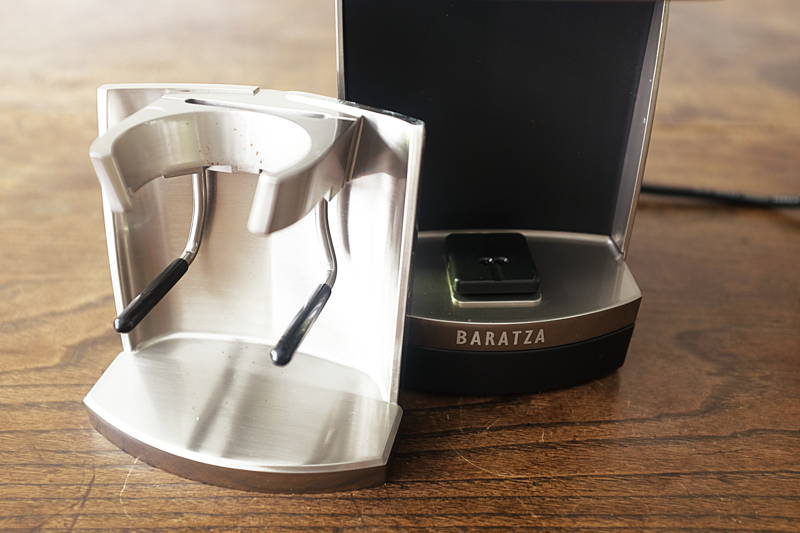
The test winner
First of all, it looks great. Hardly any grinder has pleased us as much visually as the Baratza Forté AP. It is small and weighs only 6.5 kg. Nevertheless, you notice already when unpacking how high quality this little miracle is processed. In short; the Forté made our entire team beam for the first time. The case is made almost entirely of stainless steel and has a light beige glossy tone. Plug it in and off you go! Immediately noticeable is the unusually large touch display for espresso grinders. If you think at this point that only the iPhone is good at touch, you’re mistaken. The display has a blue background and is easy to read even in the sunlight in the kitchen; it is intuitive and easy to use.
Let’s move on to the main discipline. The Baratza Forté AP has 54 mm ceramic grinding discs. Compared to other grinders in its price range, these are not the largest, but they handle the heat development excellently thanks to their material. In addition, they are extremely durable. There can hardly be any talk of wear here, even after years of intensive use.

The Baratza Forté achieves the most homogeneous grinding result in our test. It is also right up there with very small amounts when it comes to fine dust. In terms of consistency of grind, the Forté takes second place in the test behind the Baratza Sette with about 3.17 %. It is thus within the tolerated deviation, so you can confidently use the easily adjustable timer. Three presets for the timer and weighing functions can be set and saved with a few touches of the display.
A micro and macro setting lets you adjust the grind very easily and very precisely. In total, there are 260 different levels, which in our estimation are in no way inferior to the stepless grinder. Even better, if you frequently switch between different beans, you can simply remember the setting and get back to the optimal grind without much experimentation.

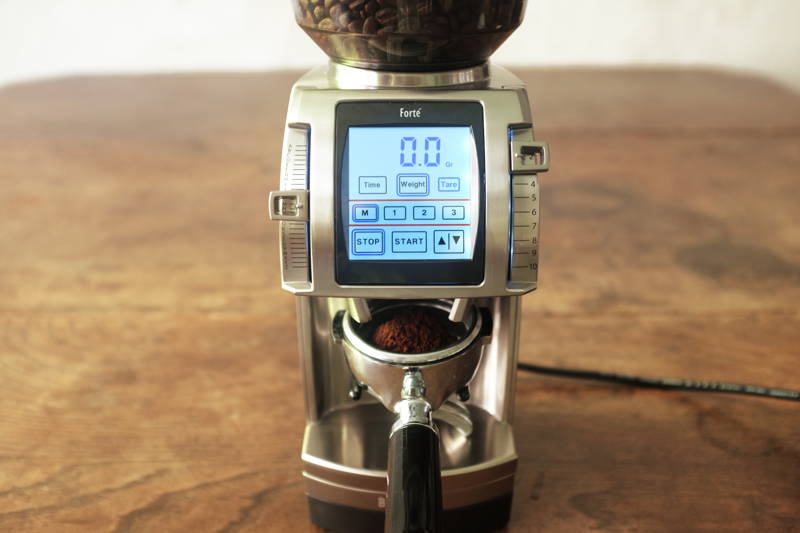
The design of the Forté also contributes to the tasteful enjoyment. The ground coffee falls vertically from the grinder and almost directly from the grinder. As a result, there is very little space where ground coffee can get stuck. The dead space is therefore correspondingly smaller than in other grinders.
This type of ejection is also very practical in terms of operation, as no coffee grounds are scattered past the sieve carrier. Especially in espresso grinders with curved ejection, this is often the case. This should be much to the delight of those who indulge in the full-bodied, creamy 18 g blast of the frequent.
Our only shortcoming concerns the Forte’s weighing function. After reading about the „weight-based“ grind in the user manual, the dream of an espresso grinder that measures the contents of the sieve carrier was within reach. And yet we were reaching into the void. Because the scale is located under the sieve carrier holder. And that doesn’t mean the two rods that actually hold the sieve carrier in the air. It’s the entire metal sieve carrier holder. If you take this off, you discover the small scale underneath, which unfortunately only works with the coffee powder container supplied with it. After inserting it into the machine, it lies exactly on the weighing surface.
Thus, the weight-based grinding only works indirectly via the time setting here as well. For those who do not have a fine scale at home, this feature may make sense, but for everyone else it is almost unnecessary. However, it should also be noted here that most grinders do not even have this function. The weighing function is therefore not a real weakness.
Conclusion: Anyone who picks up the Baratza Forté AP will appreciate the value of this grinder. The grinding result is among the best in the test and, together with the good consistency and low dead space, provides an extremely good basis for an outstanding espresso. The Forté is compact and combines practical as well as qualitative arguments with its 260 grinds. Unfortunately, the integrated scale can only be used with the powder container supplied. However, this does not seem like a serious point of criticism with regard to the performance of the core functions. Those who can live with this will find the Baratza Forté AP to be the perfect grinder for semi-professional use at home.



The affordable alternative
Square from head to toe and so shiny that you can recognize its reflection from almost any perspective. That’s the Eureka Mignon. It is made entirely of stainless steel, except for the plastic container and the base, and weighs an impressive 5.6 kg at a height of just 32 centimeters. The Eureka comes from Italy and has long been considered firmly established in coffee circles, and rightly so.
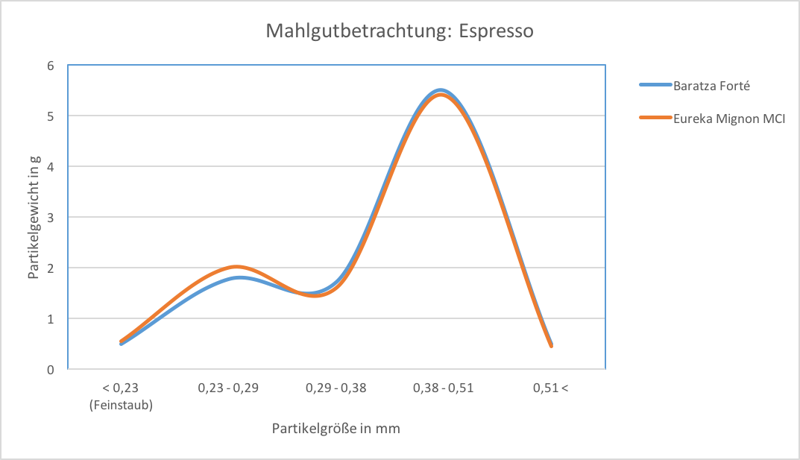
The Eureka works with 50 mm stainless steel discs, which sufficiently manage the heat development for home use.
If you compare the grinding result with the Baratza Forté AP, you can hardly see any differences. The Eureka achieves a very homogeneous grinding result and produces the same amount of fine dust as the Forté. In terms of consistency of grind, the Eureka unfortunately has to forfeit something. Especially with fine grinds, the coffee grounds tend to form lumps. In itself, this is not a problem at all, since the coffee grounds are very homogeneous. The clumping only becomes problematic when the timer is used, as one lump more or less is sometimes ejected. In numbers: 4.88 % deviation. Still not a big deal, but it does take away from the charm of using the timer function.
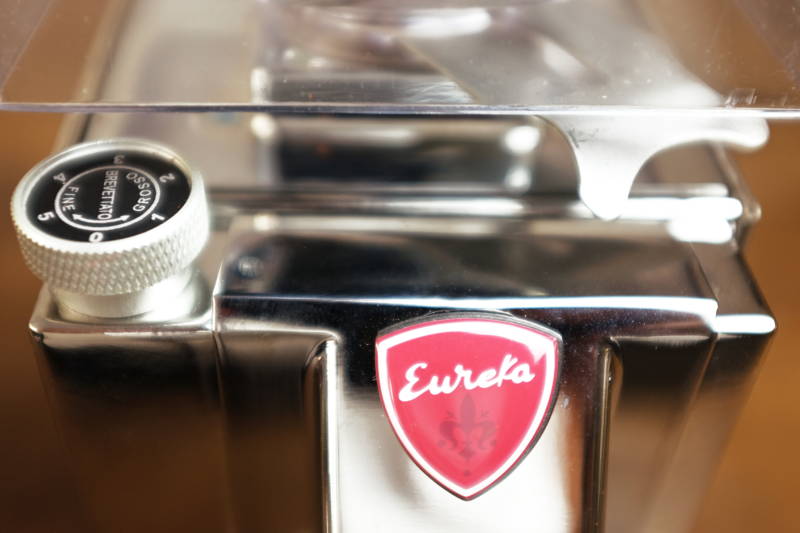

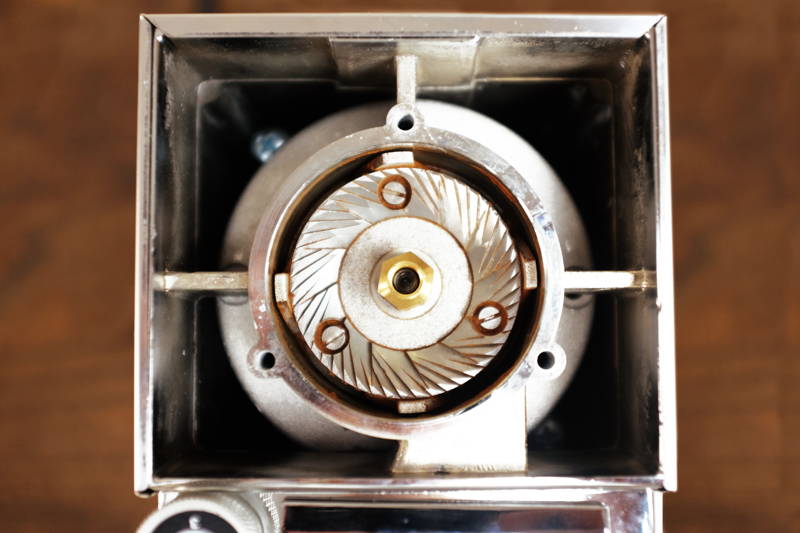
The grind is continuously adjustable by a small wheel. As a result, the Eureka offers maximum possibilities for fine-tuning your espresso. However, the fine adjustment can also prove to be somewhat problematic when searching for the optimal grind. You need a little more time and patience here, as the grind setting reacts to even the smallest changes. If you change the bean more frequently, this can become a bit of a nuisance. But once the grinder is set, pure joy comes!
The timer can also be adjusted by a similar wheel on the side of the grinder and requires some patience until the desired amount is ground. However, those who really want to optimize the taste of their espresso should not pay too much attention to the timer anyway.
Conclusion: Despite its low price, the Eureka can keep up with the best grinders in our test. It achieves a super grinding result, which is only marred by the consistency in the grinding quantity. The fine, stepless adjustment of the grinding degree requires a bit more time, but this investment is definitely worth it. The perfect grinder for the inexpensive entry into the top class.

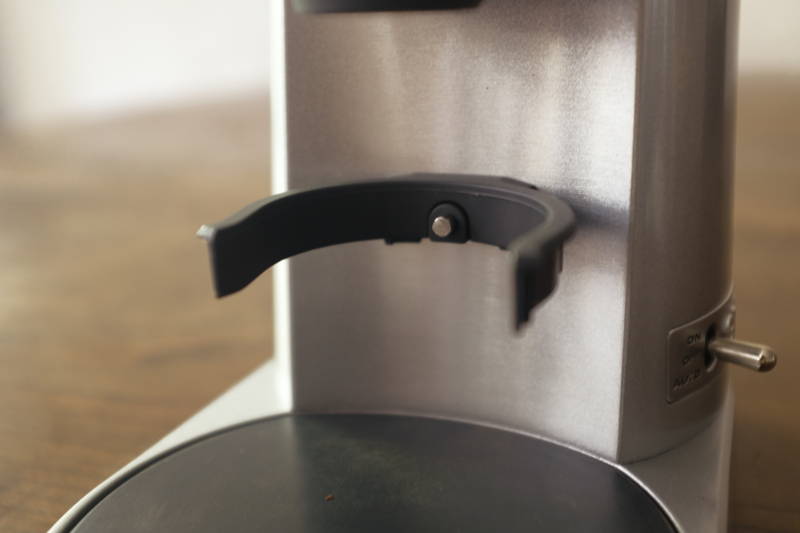
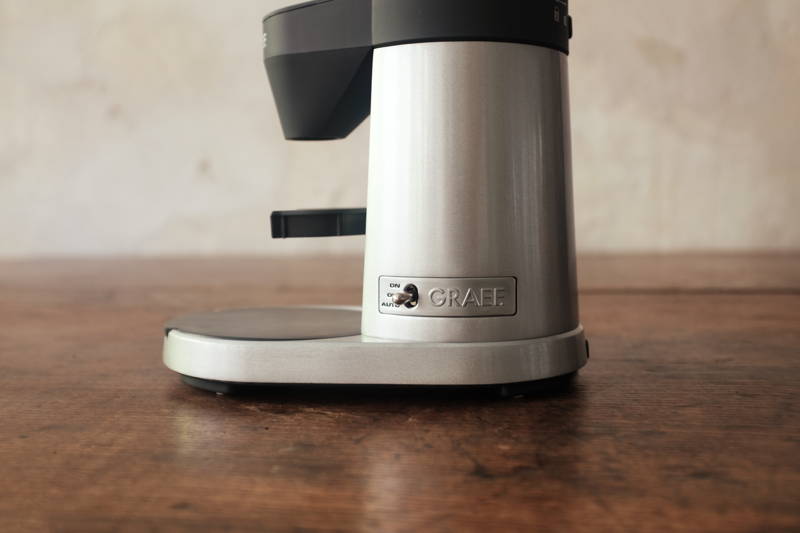

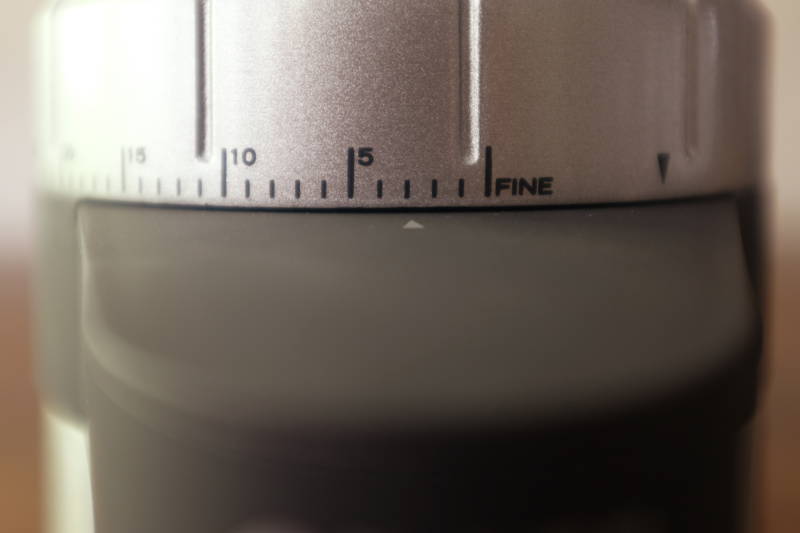
The value for money winner
What can we say? You get what you pay for with the Graef CM 800. A typical value for money winner. It is very solidly built and offers the perfect entry into the world of espresso. It is the most affordable grinder in our test and makes one thing clear to us: you won’t find more for less anywhere.
The Graef features a steel cone grinder and has 40 grinding levels. Unfortunately, only the last two of them are fine enough for espresso, which doesn’t necessarily give you the most leeway for setting your hot beverage perfectly. On the other hand, the grind is therefore very easy to adjust and the grinder can also be used well as an all-rounder for filter coffee. It should also be noted that you cannot expect more for the price.
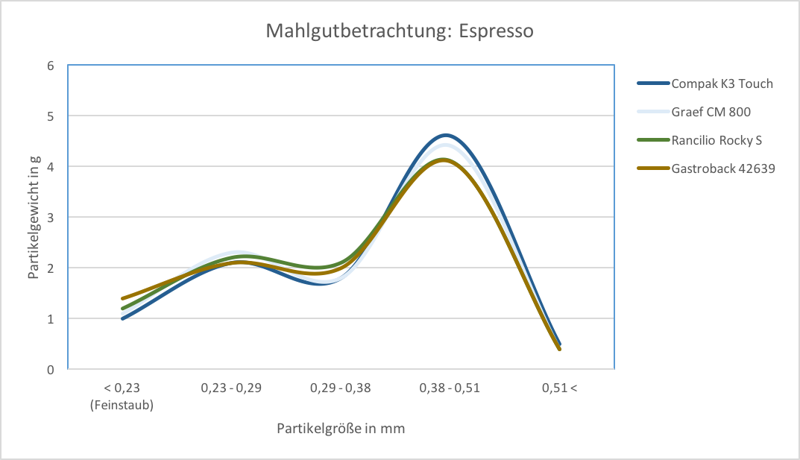
If you look at the grinding result, the Graef can almost keep up with the Compak K3. However, since the Compak has a continuously variable grinder, it offers significantly more options. Compared to the Rocky S and the Gastroback 42639, the Graef grinds more homogeneously and produces less fine dust. Determining the consistency makes little sense here, since the Graef does not have a timer. To optimize your espresso, you will need a scale.
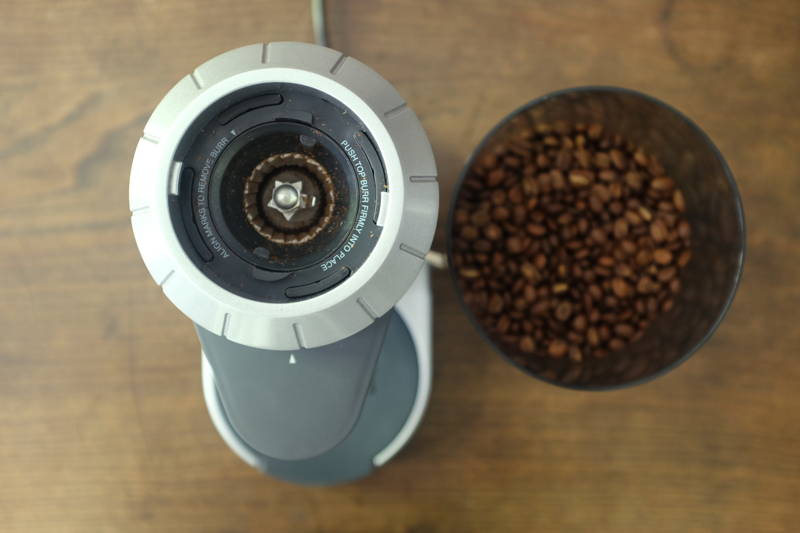
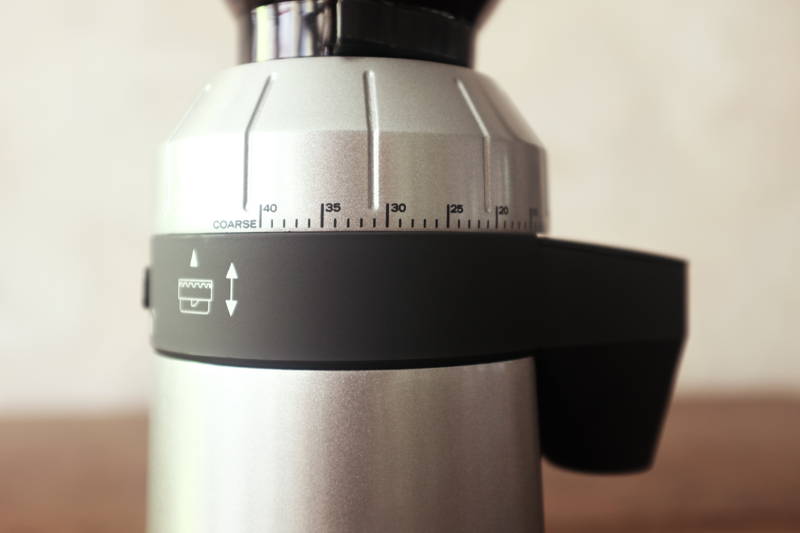
Here, too, you have to keep in mind that even the Rancilio Rocky, which is twice as expensive, does not have a timer. With a little feeling, however, it also works well without.
The only real criticism we see is the dead space of the grinder. As you can see in our video, the amount of an double espresso gets stuck on the way to the ejector. In other words, your first espresso in the morning consists entirely of yesterday’s old coffee grounds. We therefore recommend tapping out the grinder properly before each grinding cycle.
Conclusion: The Graef keeps its promises and paves the way for all beginners in the world of espresso. It is very solidly built and delivers good grinding results. You have to do without user-friendly aspects like the timer. You should also not forget to tap out the grinder before use, otherwise the first espresso of the day can turn into a bitter affair.
Where does the overall result come from?
The latter are mainly subjective criteria like design or technical details like size or weight.
Our focus was especially on the quality of the grind. After all, that’s why you buy your grinder. To assess this quality, we tested the homogeneity and fines for each test mill at different grind levels as described earlier. The consistency of grind was also important to us, as this can significantly affect the taste if you rely on the timer setting. The overall consideration of these factors flows into the overall result by 50%.
In addition, the operation and workmanship of the grinders each account for 20% of the total score. For these criteria, we took a closer look at the number of grinds, cleaning, material or known problems of the individual grinders, among other things.
The remaining part of the result is the volume, which we have divided into 3 different categories: quiet, normal and loud.
Our price-performance rating is then simple mathematics and is calculated from the overall result and the price of the grinder.
Cleaning the grinders
If you care about your grinder and want it to achieve the best grinding results for as long as possible, cleaning is about the only thing you can do wrong as a user. The most common reason for repairing a grinder is actually incorrect or insufficient cleaning. We recommend that you clean your grinder thoroughly at least every 14 days.
During the grinding process, oils leak from the beans, which coat the grinding discs and gum them up over time. If you do not clean your grinder at regular intervals, these oils can harden to such an extent that you can no longer clean them properly on your own.
